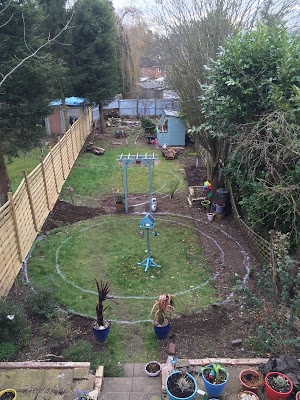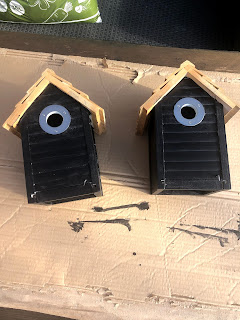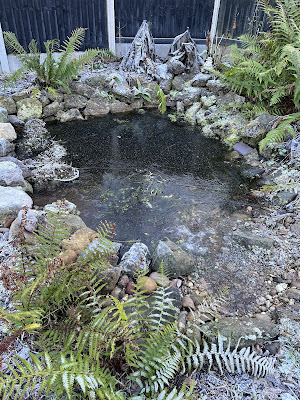Garden design idea
New year new garden. Time to seriously consider the future design and what we would ideally like to achieve.
The problem
Over the autumn and the winter the ground forms puddles in places and walking over the lawn from one end of the garden to the other creates a muddy mess across the grass surface. In the mid-to-late-spring the ground dries quickly as the weather begins to warm-up and the surface starts to crack in places becoming rock-hard.
Walking on the soil during the autumn and winter (and to some extent spring) feels like we are having an adverse affect on its quality. The surface can become compacted, shiny and waterlogged. Footprints mark the surface and sit there like you would expect to see in drying cement.
The possible solution
We need to create a series of low-maintenance pathways that we can access all the garden from without having to walk on the grass. We need to try and avoid that oil-slick appearance in the grass to give the grass a rest from traffic and give us a chance to take steps to improve the lawn. We need to create smaller manageable planting areas which we can reach mostly without having to walk on the soil or the grass.
What we want to avoid
We want to steer clear of straight lines and traditional 80's garden design that we both grew up with. To us that is the standard rectangle lawn and a path running around the edges or parallel to it all the way down one side, it just isn't us and wouldn't be doing the space we have justice.
Design idea
Circles in a narrow space widen the look of an area and draw the eye away from the edges, curved pathways are more challenging for the brain to interpret over straight pathways which clearly lead somewhere. Research indicates that we are drawn to curved things over straight things (such as in architecture, consumables and packaging) and that we interpret curves as representing beauty - we definitely want a beautiful garden!
To this end we have bought some turf spray-paint attached it to some string and a stick of bamboo stuck it in the grass and painted some temporary circles. The second circle we have drawn so it gives the appearance that the fence cuts through a section of it.
The adjoining circles leave natural spaces in between them that we can create planting beds within. Those plants can tumble over the sides to break up the edges.
Whilst we have been considering this design and the issues we may face we have discovered an amazing British edging product called Everedge. We plan to use this to create the border edges. The product promises to be flexible, stylish, contemporary and durable. We are also debating the use of a white or a yellow grit product to make the pathways.




Comments